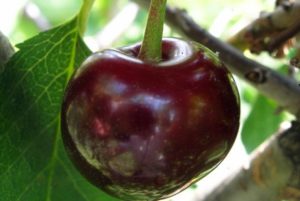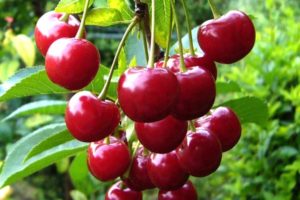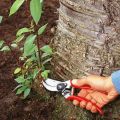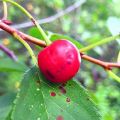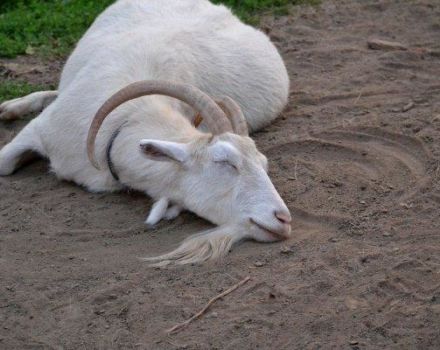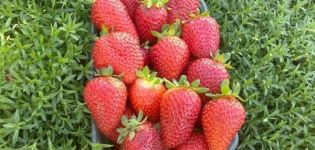Why do felt cherry leaves curl, diseases and pests, treatment and control of them
Today felt cherry varieties many Russian gardeners try to grow on their own backyards. The main difficulties arise from ignorance of the main dangers that threaten the plant. To eliminate the risk of death of a fruit tree from fungal microorganisms or pests, it is enough to learn about the main diseases of felt cherry and the features of treatment.
Major diseases
Felt culture is considered a variety resistant to various diseases inherent in traditional species. Felt cherry diseases can be associated with fungal infection, pest infestation, or improper care conditions. The disease can be determined by the appearance of the plant, abnormal abnormalities in the development of fruits and green mass. Based on how the leaves curl, whether they are shedding or spots appear, a diagnosis is formed and specific actions are taken.
Coccomycosis
A fungal disease is caused by a parasite that multiplies on the leaves of a fruit tree... Over time, the plates turn yellow, black dots appear on them, which leads to the fall of greenery. A feature of felt cherry is considered its resistance to this type of disease, but at the first signs of damage, immediate treatment with fungicides is required.
Pocket disease
Pathology arises from the influence of the fungus, and it manifests itself in an unusual form of ovary. After flowering, the berries are pitted and shaped like elongated pockets. It is in the soft sacs that the accumulation of fungus is observed. Over time, the fruits dry up and turn into a source of infection. During the gardening season, the loss of yield from pocket disease can be 1/5. In the absence of timely measures, the plant may die for the next season.

Moniliosis
Moniliosis is one of the most common diseases affecting cherry plantings. A putrefactive infection is first observed on mature fruits, gradually spreading to shoots and leaves.
Symptoms of the problem include:
- drying of inflorescences, their acquisition of a copper-brown hue;
- mummification of berries;
- signs of drying shoots.

The first signs of a fungal disease appear at the time of flowering. Spores penetrate deep into the plant over time, and the appearance of the affected areas resembles the effects of fire. The danger of the disease lies in its rapid spread, the ability to affect other types of fruit trees. The risk of moniliosis increases with a large amount of precipitation.
Pests
Number cherry pests, which can harm the plant and destroy the crop, is quite large. They and their larvae feed on the pulp of the berries and damage the stems, which leads to the appearance of gum. In the absence of measures, the plant may stop growing or die.
Shield
There are quite a few types of scale insects, but all of them have a distinctive feature in the form of a protective layer on the body, consisting of glued scaly formations of the larva. The size of the pest is no more than 5 mm, and in the initial stages of cherry damage, it is difficult to detect foci, since outwardly it looks like an uneven bark. Insects multiply rapidly and quickly cover the surfaces of shoots and leaves. They secrete a special substance called honeydew, which is an ideal breeding ground for fungi.
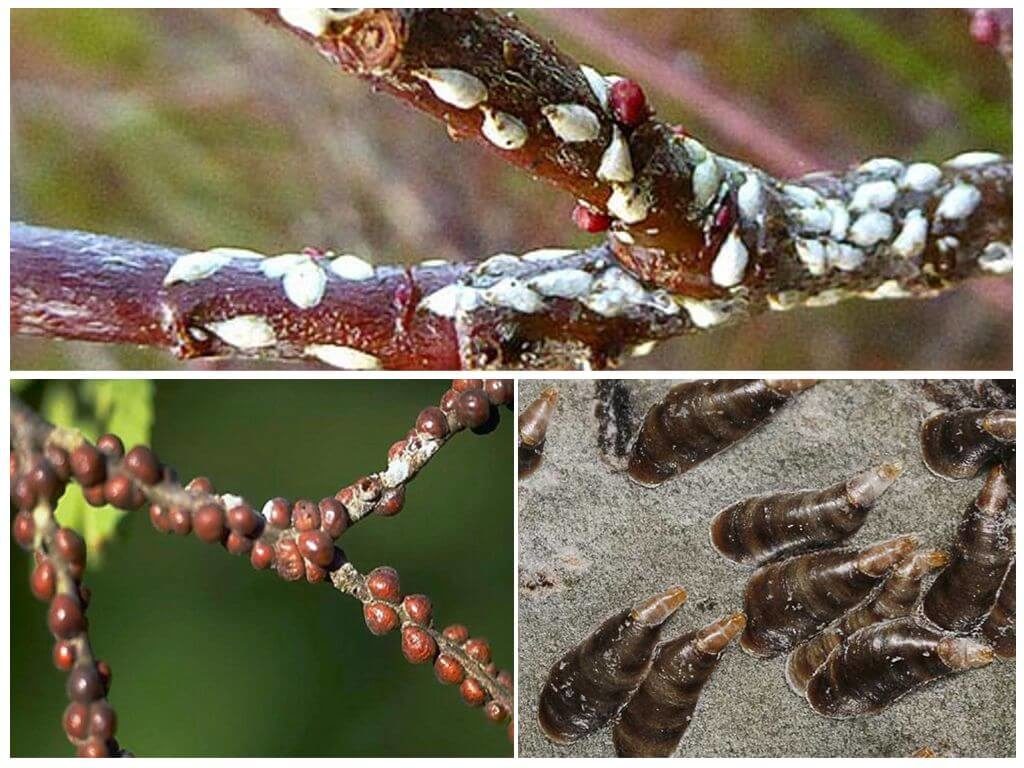
When infected with a scabbard, yellow spots appear on the leaves, the plates twist and fall off. The wood begins to crack, thin and weak branches fall off. Cherry growth is inhibited and there are signs of drying out of the tree. The risk of the appearance of a pest increases with the abuse of nitrogen-containing fertilizers, a lack of light, and a lack of moisture.
Aphid
The presence of aphids can be identified visually, the insects cover the lower part of the leaf plate and cause them to coagulate. Ants contribute to the appearance of the pest, therefore special glue-based traps are used to prevent the problem. Some gardeners prefer folk remedies to combat the pest, others prefer preparations of the group of insecticides such as "Iskra" or "Commander".

Leaf roll
Caterpillars of a butterfly reach a size of 2 cm, are brown or green in color. During the spring period, they begin to actively bite into the buds and buds of the felt cherry. The presence of a problem is easily identified by the curled leaves of the plant.
Grape mite
The main delicacy grape mite is the sap of the plant. The color of the insect can be yellow, green or red. The first pests of the felt cherry appear on the lower part of the leaves of the fruit tree. Plants suffering from drought or lack of fertilizers are most susceptible to infection. Pale yellow, silver, or red specks appear on the leaves; white specks may be present if eggs are present. In advanced stages, white membranes are observed, with an excessively large number of ticks, a cobweb forms.

Prevention and treatment
To prevent disease and reduce the risk of pest infestation, it is important to follow the planting and care rules. Cherries are rooted in sunny places, where there is no problem of soil dampness and stagnant water, in this case the chance of reproduction of fungal diseases is minimized. In the spring, the trunks are whitewashed, and during the garden season, shoots are not allowed to spread. It is required to regularly prune the tree, avoiding the appearance of excessive thickening.
Sick and affected branches are immediately removed and burned. Do the same with fallen leaves and ovary.
Treatment of a fruit tree depends on the nature of the disease. To combat fungal infections, they are treated with fungicides, following the instructions for use and safety precautions for working with drugs. A good prophylactic and therapeutic effect is ensured by spraying the tree with a solution of Bordeaux liquid.

They help well from aphids cherry processing solution based on ash, soap or tobacco. To combat leaf rollers for the purpose of prevention, plants are treated in spring with "Prophylactin", when the ambient temperature reaches +4 C. Leaves damaged by the pest must be removed and burned.After flowering, drugs of the pyrethroid group are used to fight - "Ivanhoe", "Accord", "Fatrin".
Trees infected with the thyroid gland can be quite difficult to heal, since the durable shell of an adult insect acts as a reliable defense and makes it difficult for the action of chemicals.
Young larvae are destroyed using insecticides - "Aktellik", "Aktara". Remove adult pests mechanically, carefully scraping them from the surface of the tree. Large areas are harvested completely, cut leaves and branches are burned. Places of scabbard scattering are treated with soapy water.
If a grape mite is found on a tree, the tree is washed with a stream of water. Insects do not tolerate high humidity, and such actions will help get rid of them. A good effect in the fight against the pest is obtained when the plant is treated with a soapy solution, which is washed or sprayed on the tree. With significant lesions, mechanical removal is carried out and insecticides are used, treating the plantings after the formation of ovaries, but not less than 30 days before the planned harvest.
